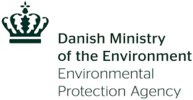
Some crops are sprayed with pesticides at dusk or in the early hours of the night to reduce the risk of destroying populations of pollinators. Bats may experience a significant dermal and inhalation exposure if they forage near or fly directly through the pesticide spray cloud. These exposure routes for bats are not covered in the current pesticide risk assessment procedures.
The conservation status of all bat species is very susceptible to increased mortality rates due to their long life spans and low reproductive rate. Furthermore, bats use resources that are widely dispersed and may commute many kilometres to forage. Some bat species might be attracted to spraying operations. These behaviours contribute significantly to the exposure risk.
Objectives and methods
The pesticide exposure risk for bats in agricultural landscapes is modelled by:
SESS will be involved in the last objective, modelling the bats risk for pesticide exposure. A bat activity map will be generated for a representative sample of Danish landscapes, the methodology will utilize ALMaSS landscape generation methods, which are capable of generating landscape models for any part
2020-2023
Danish Environmental Protection Agency
(Bekæmpelsesmiddelforskningsprogram)
